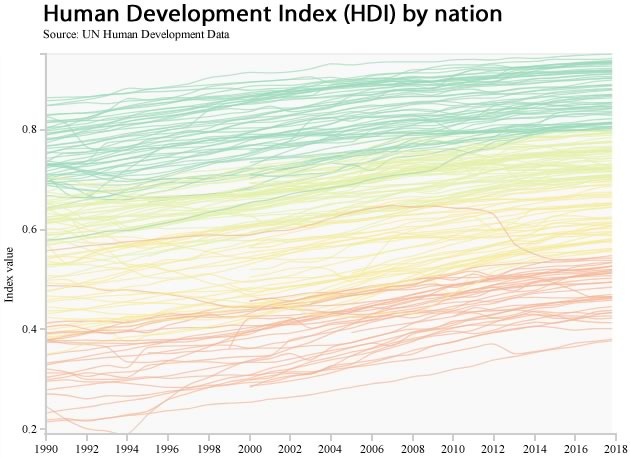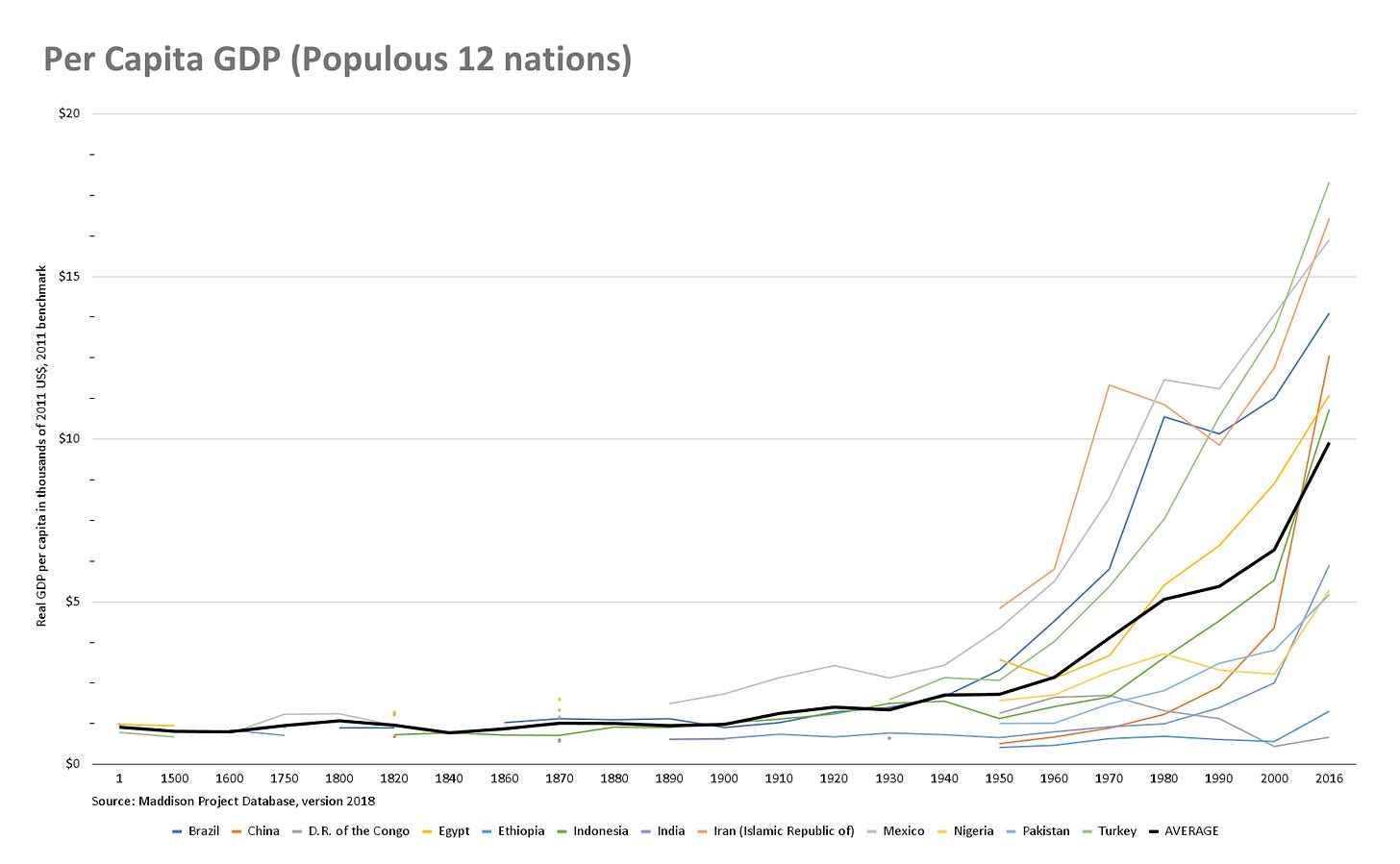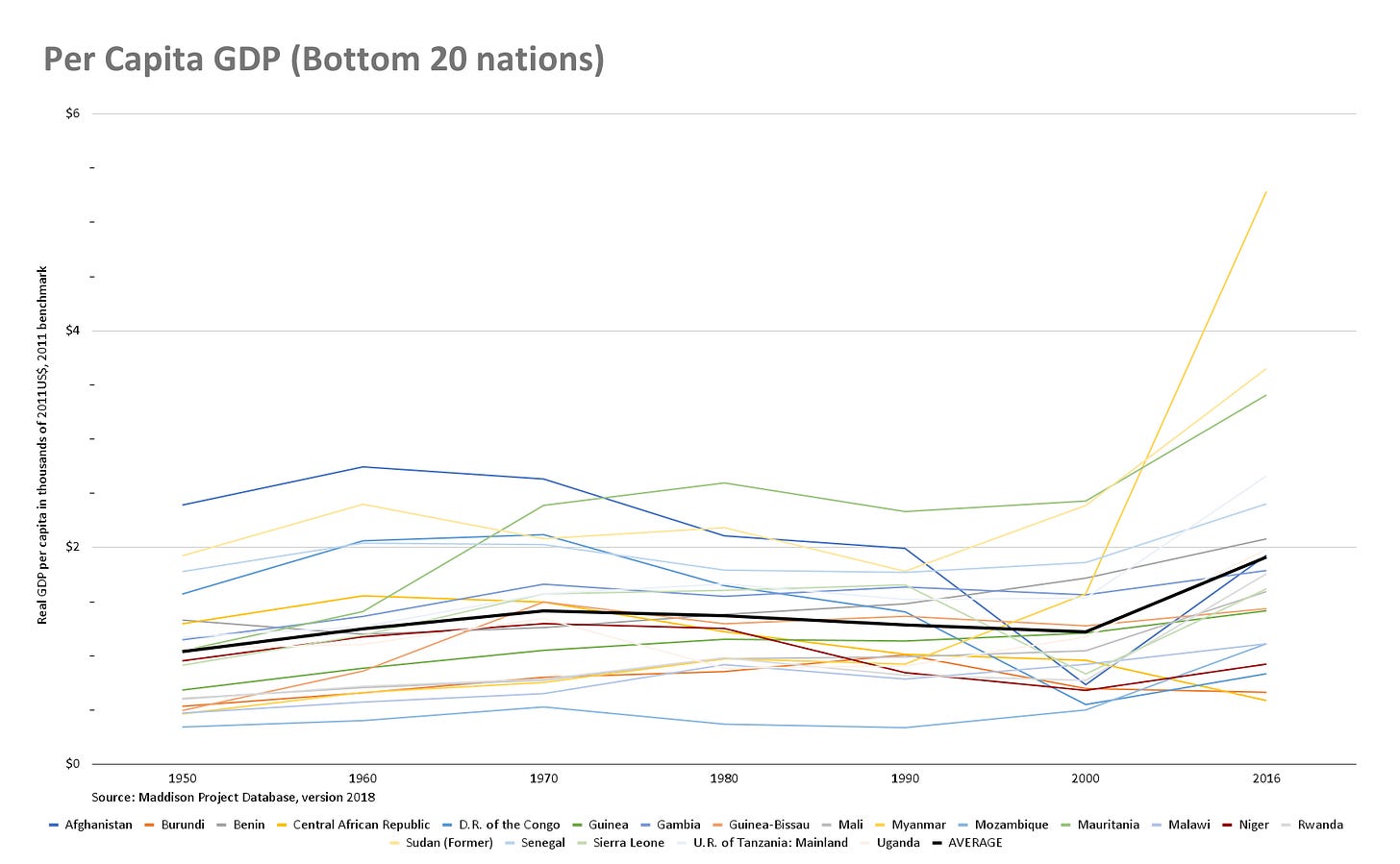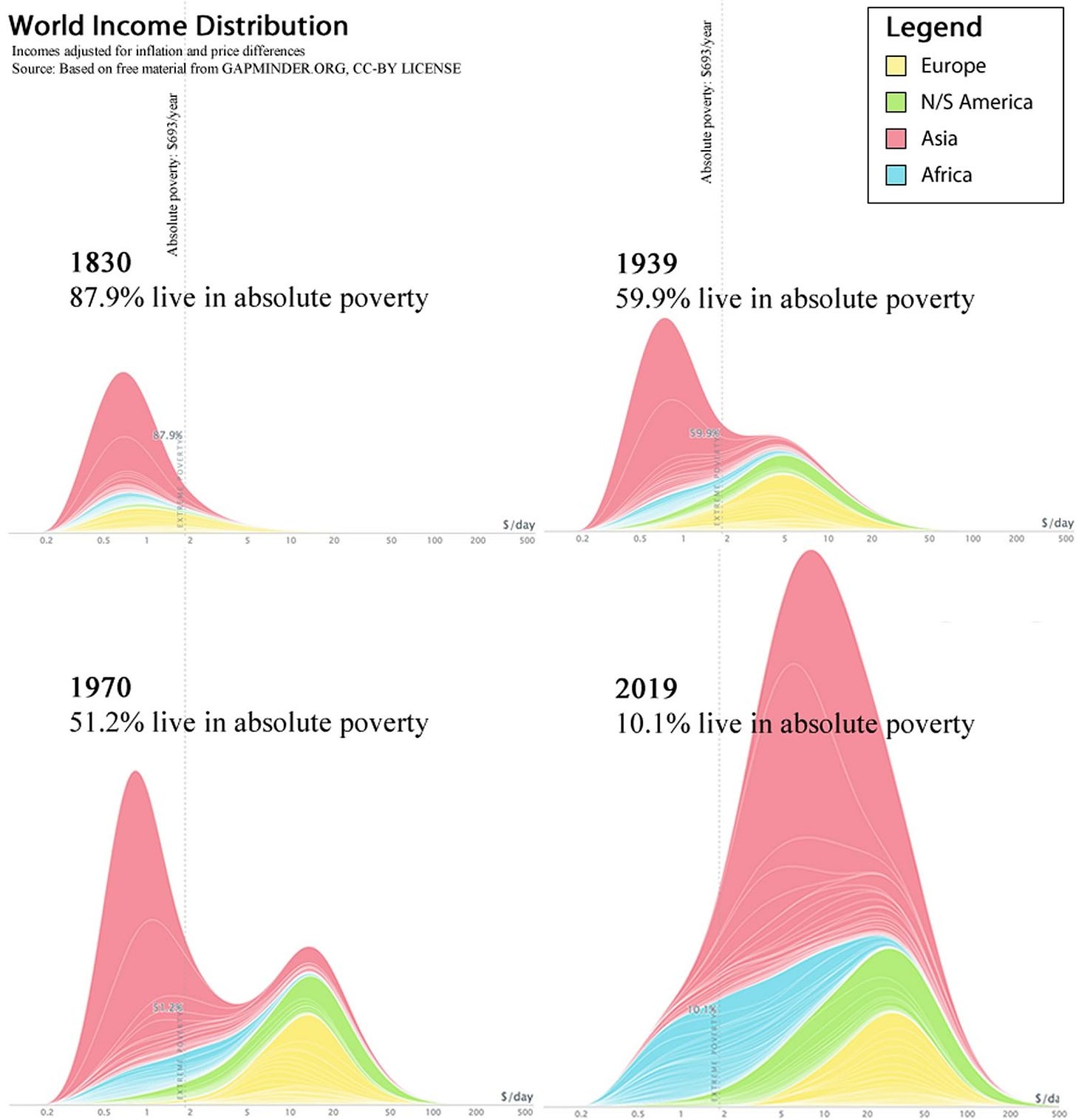Progress since 1991
The last 30+ years have been the greatest material progress in human history
This is the final post in my series on six major breakthroughs that spread material progress throughout the globe:
The emergence of Commercial societies in Europe about 800 years ago that innovated four of the Five Keys to Progress (productive agriculture, trade-based cities, decentralized power, and export industries).
The diffusion of Commercial societies from Northern Italy to Flanders and then to the Netherlands and finally to Southeast England.
The migration of Europeans to much of the rest of the world. The migration of peoples from Britain to North America was particularly important.
The Industrial Revolution in Britain, which added the fifth Key to Progress (widespread use of fossil fuels). The Industrial Revolution involved the application of fossil fuels to transportation, communication, materials, agriculture and other technologies, increasing their usefulness. This dramatically increased the rate of innovation to a level where real progress could take place in Western Europe and North America.
The Allied victory in World War II, which ended the totalitarian threats of Nazi Germany, Imperial Japan and Fascist Italy. Once the economies of Western Europe and Japan recovered from the devastation of the war, they grew at an unprecedented rate for almost 30 years.
The collapse of the Soviet Union in the early 1990s (the topic of this article), which ended the last of the great predatory empires and undermined the legitimacy of centralized political monopolies. As a result, country after country dismantled totalitarian and authoritarian regimes in favor of increased freedom, democracy, market-based competition, and global trade.
The most recent breakthrough in the spread of progress for the masses was the fall of the Soviet Union in 1991. This event delegitimized the radical centralization of power and utopian ideologies that are central to totalitarian regimes. And it also removed forces that had kept small Communist elites in power in many nations.
Without Soviet occupation, military and economic aid, and expertise in constructing brutal security apparatuses, leftist regimes collapsed one after another. With the obvious exceptions of China, Vietnam, North Korea, and Cuba, it was an almost total wipeout of Communist regimes.
Though Communist China has made an epic comeback to world power, the regime is every bit as capitalist as the rest of the world. Communist China has effectively melded together a capitalist economy with a totalitarian political order that allows just enough freedom to encourage economic growth, but not enough to threaten the political power of the Communist party.
While the transition has been politically controversial, nation after nation has slowly learned to copy the technologies, skills, and social organizations of the Western Industrial societies. The result has been the dramatic progress documented in other articles.
Without Britain and the United States showing the way this could be done, none of this would have been possible. The earlier industrializers went through the long process of learning how to:
Master the new skills that those technologies required
Founding new social organizations to maximize their usefulness.
They also radically lowered the cost of manufacturing those technologies at scale, making them affordable to the poor.
More closely related to the metrics that we discussed in other articles, the people learned to adapt those technologies, skills, and social organizations to improve the quality of sanitation, literacy, drinking water, health care, immunization, housing, food, education, and lowering the levels of violence, war, and forced labor.
What had once been a small network of trade-based cities in one corner of Eurasia has spread to billions of people across the planet. Some of the nations that industrialized earlier innovated new solutions to their problems. As they worked out solutions, largely by trial-and-error, they created models that could be copied by countries that were previously locked in poverty by their geography.
The following is an excerpt from my book From Poverty to Progress: Understanding Humanity’s Greatest Achievement. You can purchase discounted copies of my book at my website, or pay full prize at Amazon.
This article is the final article in my multi-part series on How progress spread across the globe:
How Progress Spread Across the Globe (podcast)
How the Industrial Revolution upset the military balance of power
How Progress shaped the Great Power conflicts of the 20th Century
Progress since 1991 (this article)
If you are interested in this topic, you should read my “From Poverty to Progress” book series:
Evidence of Progress
By any of dozens of metrics, we are better off materially than we have ever been in our history. If you do not believe me, then look at the metrics of economic growth, human development, freedom, slavery, poverty, agricultural production, literacy, diet, famines, sanitation, drinking water, life expectancy, neonatal mortality, disease, education, access to electricity, housing, and violence (to name just a few), and in virtually every nation. And there are plenty more in my book.
Below I will add only a few metrics showing human material progress. You can view many more by clicking the links above.
The Great Problem-solving Network Expands
What were are seeing with each of these six historical breakthroughs is the gradual spreading of the Five Keys to Progress across the world. When each of the Five Keys to Progress is in place, a society becomes a vast decentralized problem-solving network.
Modern societies are composed of millions of technologies, skills, and organizations that humans link together in creative ways to solve problems. Many of these problems are so mundane that we take them for granted. Eating food, drinking clean water, disposing of waste, getting to work, seeing at night, and communicating with friends, family, and coworkers.
Citizens in those networks freely join together in social organizations to combine technologies and skills to solve other people’s problems. They typically do so not out of a vague sense of wanting to help other people, but to earn enough money to survive, reproduce, and enjoy their brief time on earth.
Progress comes from decentralized networks of technologies, skills, and social organizations. Organizations within these networks compete with each other to survive. That competition forces the members of those organizations to cooperate more closely, adopt the latest technologies, learn the latest skills, and adopt the latest processes. All of this drives progress.
A key factor in the success of organizations and individuals is the ability to copy what works. We often tend to think of innovation as creating something entirely new, something that no one else could even imagine.
Innovation in the real world is often far more mundane: it comes from copying technologies, skills, and processes that have already been proven to work, combining them with other existing technologies, skills, and processes, and then modifying them to function optimally in the new environment.
The real key to innovation is not coming up with a new idea or building the first prototype. It is the long process of diffusion and implementation that occurs as the innovation gradually spreads through society. Ironically, as we have seen, copying is the key to innovation.
The above is an excerpt from my book From Poverty to Progress: Understanding Humanity’s Greatest Achievement. You can purchase discounted copies of my book at my website, or pay full prize at Amazon.
This article is the final article in my multi-part series on How progress spread across the globe:
How Progress Spread Across the Globe (podcast)
How the Industrial Revolution upset the military balance of power
How Progress shaped the Great Power conflicts of the 20th Century
Progress since 1991 (this article)
If you are interested in this topic, you should read my “From Poverty to Progress” book series:












Does China repudiate the requirement for decentralized decision making/governance in your 5 step model?